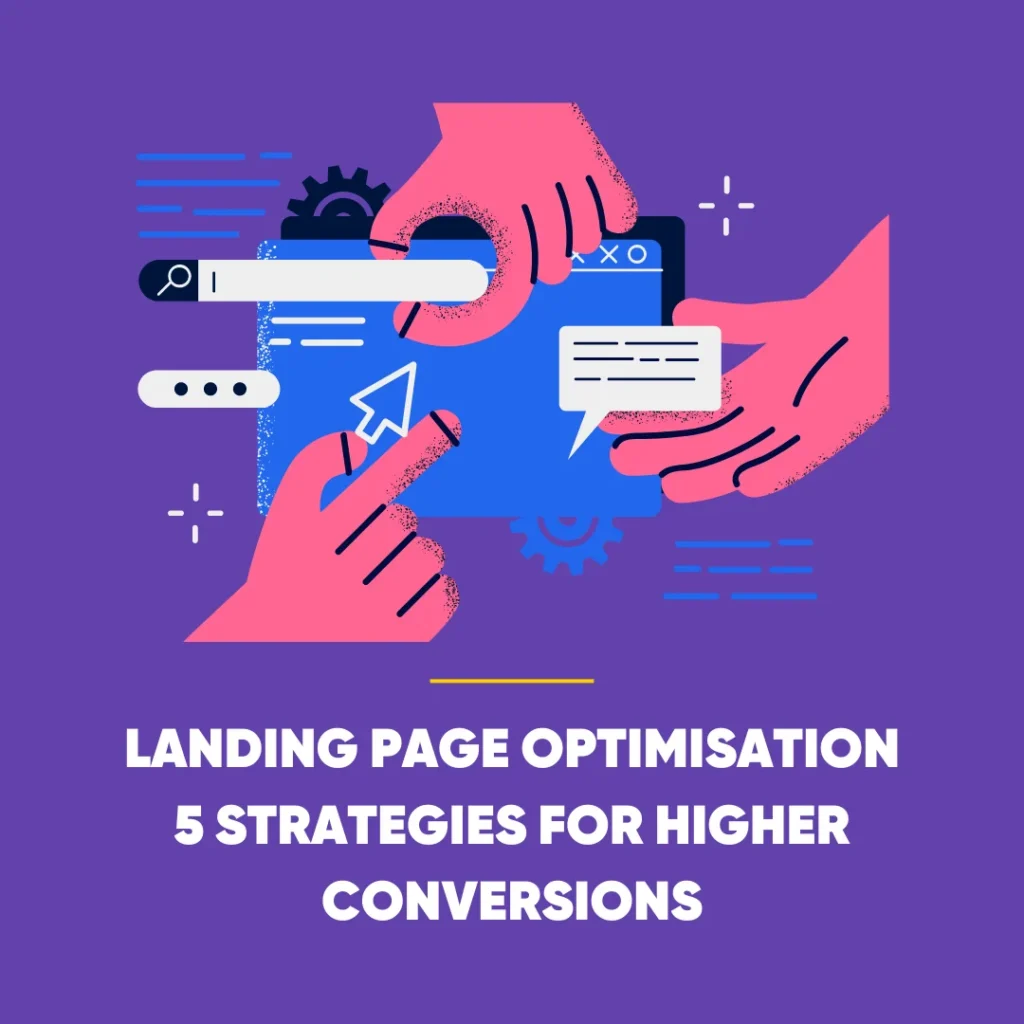The Mobile Optimisation Impact on Your Website’s Performance
Mobile Optimisation Unveiled
Mobile optimisation impact refers to the process of tailoring your website to ensure a seamless and engaging experience for users on mobile devices. It involves enhancing the design, functionality, and content to meet the specific needs and constraints of smartphones and tablets.
Adapting to the Mobile Revolution
In a digital era dominated by smartphones, adapting websites for mobile devices has become more than a trend—it’s a necessity. As mobile users continue to surge, accounting for a significant portion of internet traffic, the importance of optimising your site for these users cannot be overstated.
Mobile Optimisation Impact: Significance of Mobile Traffic
The Mobile Surge: Statistics reveal an undeniable surge in mobile device usage, making it a dominant force in online engagement. Mobile traffic is not merely a side player; it’s taking centre stage in the digital arena, demanding our attention and strategic focus.
Comparing Trends: Mobile vs Desktop: Comparing the trends between mobile and desktop traffic, it’s evident that the pendulum is swinging towards mobile. Overall, users prefer the convenience and accessibility offered by their smartphones, urging website owners to align their strategies with this shift.
User Experience Enhancement
Seamless User Experience with Responsive Design: A key facet of mobile optimisation is responsive design, ensuring that your website seamlessly adapts to various screen sizes. This approach not only meets the technical requirements but also enhances the overall user experience.
Load Times Matter: Mobile users value speed. Mobile optimisation significantly contributes to faster load times, a critical factor in retaining user interest and satisfaction. Every second counts, and a swift-loading website can make all the difference in keeping your audience engaged.
Mobile Optimisation Impact: Search Engine Optimisation (SEO) Benefits
Google’s Mobile First Indexing Explained
Google’s shift towards mobile first indexing means that mobile friendly websites gain precedence in search results. Subsequently, understanding and leveraging this shift is pivotal for maintaining and improving search engine rankings.
Mobile Friendly Equals Higher Rankings
Aligning your website with mobile SEO best practices is not just about pleasing search engines; it’s about securing higher rankings. Google rewards mobile friendly sites with better visibility, ultimately driving more organic traffic.
Mobile Optimisation Impact: Business Implications
Conversions Soar with Mobile Optimisation: Mobile friendly websites aren’t just about aesthetics; they are conversion powerhouses. The ease of navigation and quick load times contribute to a positive user journey, translating into higher conversion rates for your business.
Stay Competitive in a Mobile First World: In a competitive digital landscape, having a mobile optimised website provides a crucial edge. Embracing the mobile first approach positions your business ahead of the curve, ensuring that you not only meet but exceed user expectations.
Significance of Mobile Traffic
Mobile Optimisation Impact: Rising Tide of Mobile Users
In today’s digital landscape, the relentless ascent of mobile devices is exerting a profound mobile optimisation impact, reshaping the way we access and consume information. The statistics paint a compelling picture of this paradigm shift.
Prevalence of Mobile Users: Data underscores the increasing prevalence of mobile users globally. With billions of people relying on smartphones for their online activities, the era of mobile dominance is unmistakable. From shopping to socialising, mobile devices have become indispensable.
Mobile vs Desktop: Unveiling Trends: When we compare mobile and desktop traffic trends, the divergence is evident. Mobile traffic has not only caught up but has, in many instances, surpassed its desktop counterpart. The convenience and portability offered by mobile devices have propelled them to the forefront of digital engagement.
Mobile’s Meteoric Rise: The numbers don’t lie – the meteoric rise of mobile traffic is reshaping the digital landscape. Whether it’s browsing websites, checking emails, or scrolling through social media, users are choosing the handheld convenience of mobiles over traditional desktops.
User Preferences Redefined: Moreover, understanding the statistics isn’t just about numbers; it’s about grasping a fundamental shift in user behaviour. The preference for mobile devices goes beyond a mere trend; it reflects a fundamental change in how individuals prefer to access and interact with online content.
Adaptation is Key: For businesses and website owners, recognising the significance of mobile traffic is not just about acknowledging a trend; it’s about survival in a dynamic digital ecosystem. All in all, as mobile usage continues to climb, adapting strategies to cater to this audience is imperative for sustained relevance and success.
User Experience Enhancement
Responsive Design: A Pillar for Seamless User Experience
In the realm of mobile optimisation, responsive web design emerges as a cornerstone, ensuring a seamless and enjoyable user experience.
Responsive Web Design Unveiled: Responsive web design is paramount for accommodating users on various devices. In other words, it allows your website to adapt effortlessly to different screen sizes, from the smallest smartphone to the largest tablet or desktop. This adaptability ensures that your content remains clear, readable, and visually appealing, irrespective of the user’s device.
Elements of Responsive Design: Consider elements like fluid grids, flexible images, and media queries as the building blocks of responsive design. In other words, fluid grids ensure page elements are sized proportionally. Furthermore, flexible images and media queries adjust content based on the user’s screen. These responsive elements contribute to a website that looks good. overall, it functions seamlessly across the diverse landscape of devices.
Faster Load Times: The Heart of User Satisfaction
Beyond aesthetics, mobile optimisation significantly impacts website loading speed, a critical factor in user satisfaction.
Mobile Optimisation’s Impact: Mobile optimised websites load faster, delivering an instant and responsive experience to users. Subsequently, the streamlined design and optimised code ensure that your content reaches users swiftly, meeting their expectations for quick and efficient interactions.
Load Times and User Satisfaction: The connection between load times and user satisfaction is undeniable. Users, accustomed to the speed of modern technology, expect instant access to information. A website that loads promptly not only satisfies this expectation but also keeps users engaged and prevents the frustration that arises from sluggish performance.
SEO Friendliness: From a SEO perspective, search engines favour websites with faster load times. Optimising your site for mobile not only caters to user expectations but also aligns with search engine algorithms, potentially improving your site’s search rankings.
 Search Engine Optimisation (SEO) Benefits
Search Engine Optimisation (SEO) Benefits
Google’s Mobile First Indexing: A Shift in the SEO Landscape
Google’s transition towards mobile first indexing signifies a fundamental change in how search engines evaluate and rank websites.
Understanding the Shift
Google now primarily uses the mobile version of a website for indexing and ranking, recognising the prevalence of mobile users. In fact, this shift means that websites not optimised for mobile may face challenges in achieving favourable search rankings.
Mobile Optimisation Impact: Impact on Search Engine Rankings
Mobile optimisation directly influences search engine rankings. Websites that are mobile friendly are more likely to appear higher in search results. In fact, Google acknowledges the importance of delivering content. Therefore, it caters to the majority of users accessing the internet through mobile devices.
Improved Page Ranking: The Mobile Friendly Advantage
The link between mobile friendly sites and enhanced search rankings is a critical factor in the competitive digital landscape.
Mobile Friendly Equals Higher Rankings: Websites designed with mobile users in mind often secure higher search rankings. Google’s algorithms favour sites that provide a positive user experience across devices. Mobile optimisation, therefore, becomes not just a user-centric practice but a strategic move to climb the ranks in search engine results.
Tips for Mobile SEO Best Practices: Optimising content for mobile SEO involves several key practices. Prioritise a responsive design, ensuring that your site functions seamlessly on various screen sizes. Compress images to reduce loading times, and use concise, keyword-rich content. For example, leverage descriptive meta tags and mobile friendly URLs to enhance your site’s visibility in search results.
Business Implications
Increased Conversions: Mobile Friendly, Conversion-Boosting Powerhouse
Contributing to Higher Conversion Rates: Mobile optimisation is a catalyst for higher conversion rates. The seamless user experience and faster load times on mobile devices create a conducive environment for users to navigate effortlessly and complete desired actions, leading to increased conversions.
Real-world Success Stories: Real-world examples abound of businesses reaping the benefits of mobile friendly websites. In fact, e-commerce giants that prioritise mobile optimisation witness a surge in mobile driven sales. Thus streamlined mobile experiences translate directly into tangible business success stories, with conversion rates witnessing significant uplifts.
Competitive Edge: Navigating the Mobile Centric Landscape
Mobile Optimisation as a Competitive Advantage: In the evolving digital landscape, mobile optimisation stands as a powerful tool for gaining a competitive edge. Furthermore, businesses investing in mobile friendly environments position themselves ahead of the curve. In fact, they capture the attention and loyalty of mobile savvy consumers.
Strategies for Staying Ahead: Exploring how mobile optimisation can be a game-changer involves adopting strategies tailored for a mobile centric online landscape. Responsive design, mobile friendly content, and streamlined checkout processes are crucial elements. Staying ahead means not just meeting but exceeding user expectations through constant adaptation and innovation.
Mobile Optimisation Impact: Conclusion
In summary, in the business realm, mobile optimisation is not just a technological upgrade; it’s a strategic imperative. The impact on conversions and the potential for gaining a competitive edge make it an indispensable aspect of a successful digital presence. Furthermore, embracing mobile friendly practices goes beyond meeting current standards. All in all, it’s about future-proofing your business in a world where mobile devices shape consumer behaviour and business outcomes.
Find out more about what’s happening within the digital marketing in our blog column.











